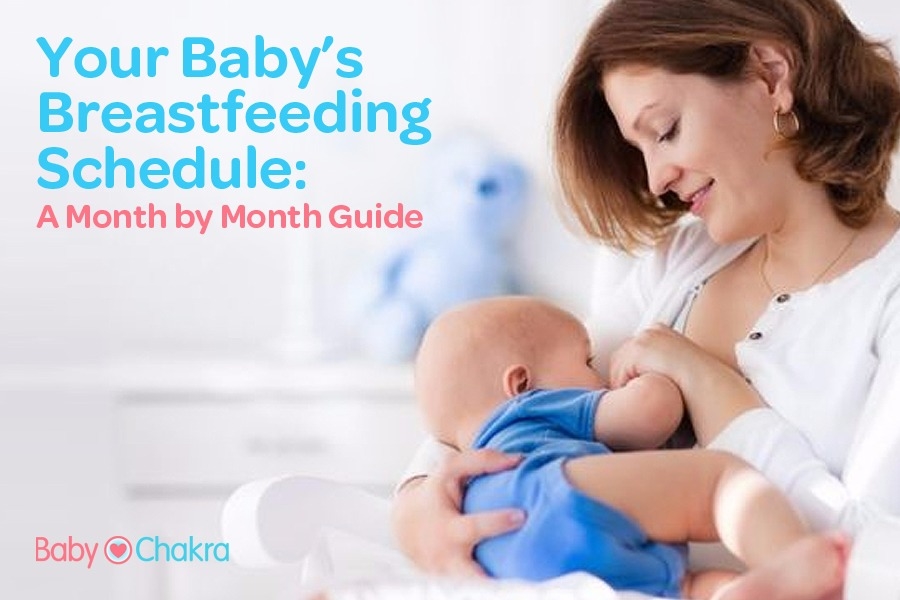
Breastfeeding Basics: How Much And When
30 Oct 2017 | 3 min Read
Sonali Shivlani
Author | 213 Articles
Breastfeeding is a fulfilling experience for both, mother and baby. As a baby grows, her/his breastfeeding patterns change as per the nutrition s/he needs. Here’s what you need to know about your baby’s breastfeeding timeline from birth to beyond.

This is a good time to initiate breastfeeding as your baby is active and alert. Allow your little one to nuzzle the breast and give plenty of skin-to-skin contact. This initiates an effective start to breastfeeding. Take your doctor’s or a lactation consultant’s help to achieve the first latch.

Feed your baby often and keep track of the clock. At this stage your baby should take a minimum of 10-12 feeds every 24 hours.
Feeding from 15 days to 6 months
In this period, you can switch to demand feeding. Before you plan your next feed, watch your baby for feeding cues such as moving of the lips, making suckling movements, rooting, getting agitated and finally crying (the last sign of hunger).

Your baby’s stomach is still small and needs frequent feeds, maybe every 2 to 3 hours. Her/his feeding time will also be longer, around 25 to 45 minutes per feed. Suckling is hard work, and your little one gets easily tired. If your baby falls asleep at the breast, you might need to awaken her/him to complete a feed.

Your baby’s stomach is now growing and can hold more milk. Your baby is also stronger and hence will be able to finish a feed faster. The number of feeds might now be 7 to 8 in 24 hours and each feed may last for 15 to 25 minutes. You will also find that your baby is more distracted and playful, so try to feed in a quiet room to encourage her/him to complete the feed.

This is the right time to introduce solids. Start with one semisolid meal at a time. This means that you will eliminate only one breast feed at a time, as breast milk is still the chief source of nutrition for your baby.

At this stage, 50% of your baby’s nutrition will probably be met by solids and the balance 50% by breast milk.

The World Health Organisation (WHO) recommends that you continue breast feeding into the second year as well. At this point, your baby should ideally be taking about 4 to 5 solid meals and the rest of the feeds as breast milk. However, many mothers decide to wean their babies at this stage.
Remember, every child is different, so breastfeeding needs will differ from baby to baby. Just watch your little one for signs, and have a great nursing journey together.
#breastfeedingschedules #breastfeedingtips #breastfeeding #breastisbest
A


Related Topics for you
Suggestions offered by doctors on BabyChakra are of advisory nature i.e., for educational and informational purposes only. Content posted on, created for, or compiled by BabyChakra is not intended or designed to replace your doctor's independent judgment about any symptom, condition, or the appropriateness or risks of a procedure or treatment for a given person.
